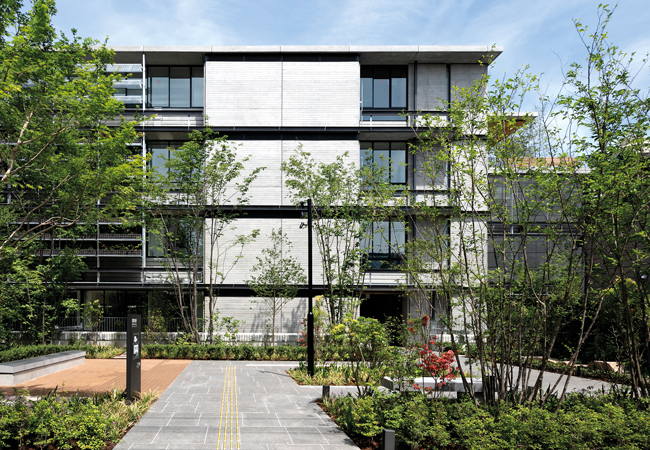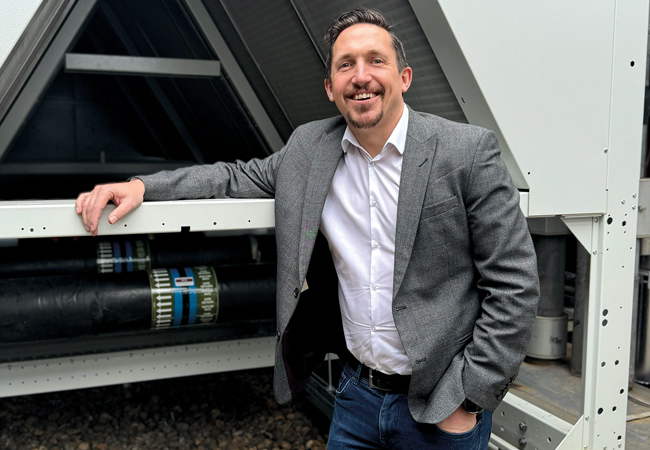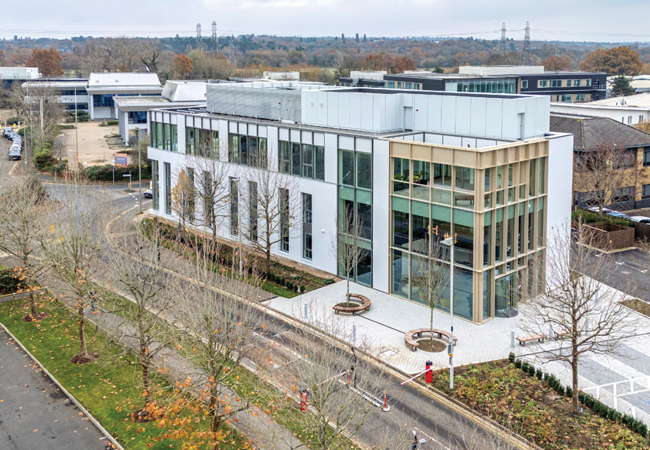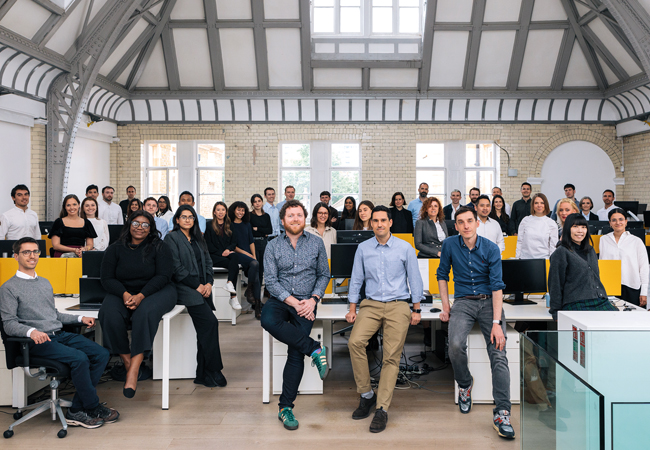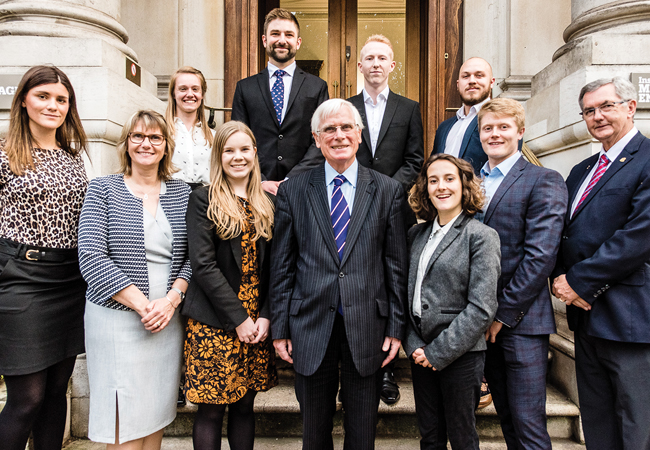
The CIBSE ASHRAE Graduate of the Year Awards – now in its 24th year – challenges young engineers to ‘sparkle’ in front of an audience by showing off their communication skills.
Of the 54 entries, eight were shortlisted this year, and seven young professionals presented to a capacity crowd at the Institution of Mechanical Engineers on 10 October.
This year’s question was: how can building services professionals find the right balance between the needs of the global environment, occupant health, wellbeing and productivity, and best value?
Laura Luckhurst (pictured below, left) graduate mechanical engineer at Cundall, won the top prize – a trip to the ASHRAE Winter Conference in Orlando – after impressing the judges with her articulate and confident five-minute presentation.
Second-placed finalist Felix Cox, mechanical engineer at Aecom (pictured below, middle) and third-placed finalist Tom Lusty (pictured below, right), building services engineer at Couch Perry Wilkes, were awarded £600 and £300 respectively from The Rumford Club, while all other finalists received £100 each from The Manly Trust.
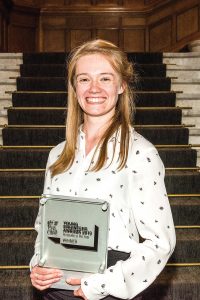
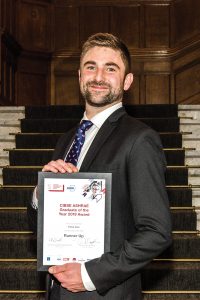

From left: Winner – Laura Luckhurst; Runner-up – Felix Cox; Third place – Tom Lusty
Research and experience
In her presentation, Luckhurst said the key to finding the balance between the environment, people and cost was to use existing research and guidance and apply it ‘to every single project we work on’. She said: ‘It’s not about wellbeing and energy competing, but about finding that balance.’
The Well Building Standard is already aligned to certain energy certifications, she continued, and it has highlighted the areas on which engineers need to focus and make judgement calls to achieve optimal design.
To be able to make those judgement calls, engineers need onsite experience, she said. ‘We need to be able to understand how buildings are constructed, operated and maintained; it’s something we need to push for and encourage our employers to provide.’
Luckhurst, who graduated from Sheffield University in 2018, said spending time with facilities managers on every project was paramount.
‘It’s about understanding the quirks of the building and looking to design out difficulties in maintenance so we can make facilities managers’ lives easier, which also makes the job quicker and cheaper.’
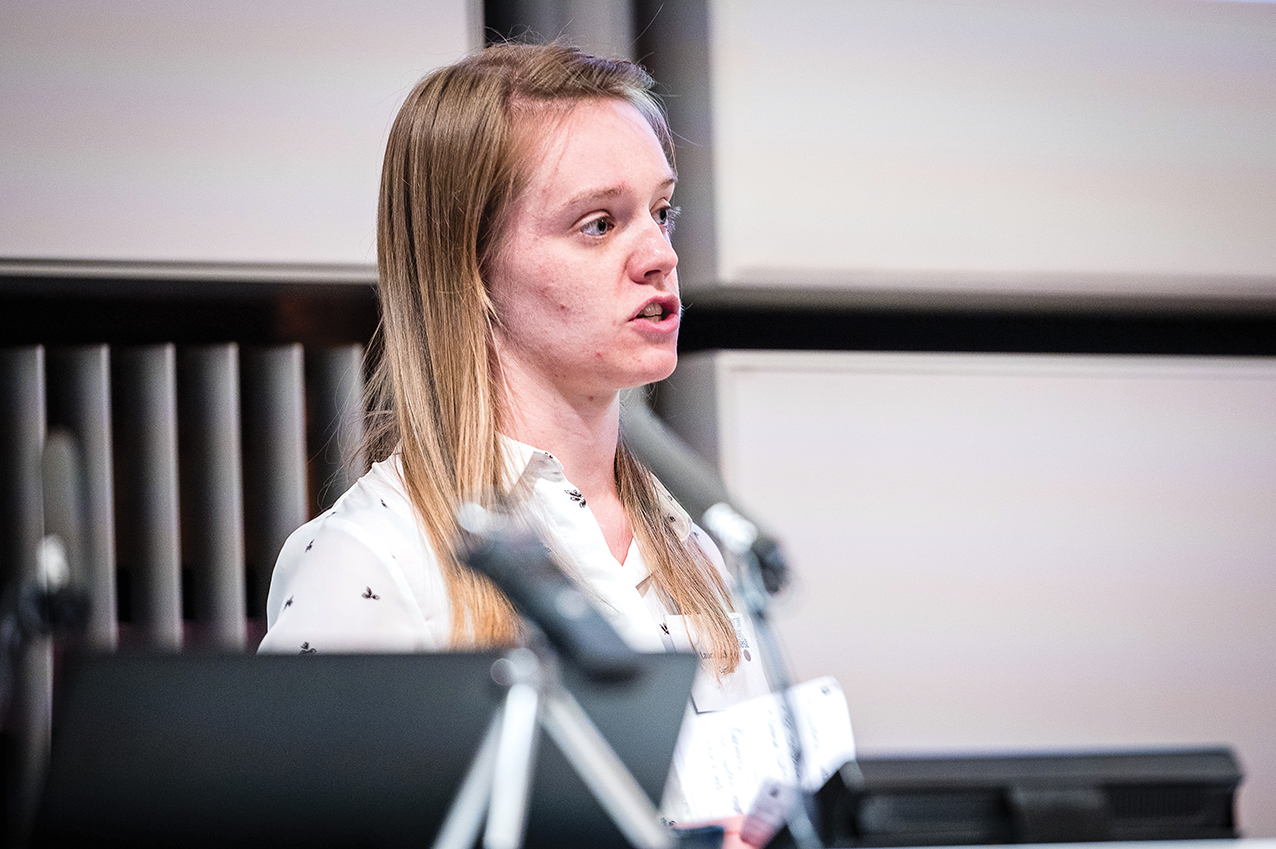
Luckhurst gave a confident speech
However, she said cost was one of the biggest barriers to designing for optimum balance between wellbeing and the environment.
Clients do not always want to pay more for something they can get cheaper, so it was up to engineers to show them the value in designing for wellbeing.
Luckhurst said that, at Cundall, ‘we push Well in all our designs and show that this investment is worth making’ using the wealth of data and research the firm holds.
After designing and optimising the areas they can directly influence, Luckhurst said engineers should go further and ‘make recommendations to the clients to see how we can affect wellbeing in the building as a whole, not just the areas we work on’.
She added that, by getting occupants invested in their spaces, ‘we can put pressure on clients from both sides’.
‘Using these methods, using the research we already know, knowing our numbers, pushing wellbeing through facts and data gathering, and getting the experience we need, we can create healthy, low energy spaces,’ she said.
All that jazz
Runner-up Felix Cox, who graduated from Queen Mary University in 2018, called the three conflicting agendas – health, wellbeing and productivity; best value; and the global environment – a trilemma.
There is a growing move towards higher standards of wellbeing in a working environment – everything from more social and collaborative spaces to better internal air quality and dynamic lighting, said Cox. And research suggests a little more investment into wellbeing can have a big financial benefit in terms of productivity.
‘Traditionally, we might associate best value with driving down the cost of a building, but people are starting to look at value in different ways – they can see the value of things like putting a bit more fresh air into office spaces to increase productivity,’ he said.
But what’s the point of having excellent indoor air quality if you’re suffocating in the London smog on your commute to work every day, he asked. ‘We can see how these three areas are inherently linked.’
While considering how to approach the problem, Cox – who previously worked as a jazz clarinet/saxophone session musician – said he even considered ‘writing a five-minute piece of music in a moment of desperation’ but, in the end, decided to focus on technology.
Cox said exciting new technologies can be used to bring the three corners of the trilemma together to find better alignment. ‘We can use smart buildings to monitor building performance and wellbeing, bringing those corners closer together, and virtual and augmented reality to change the way we communicate,’ he said.
The construction, operation and maintenance of the built environment accounts for 45% of UK carbon emissions, said Cox, and that means ‘we’re in a really privileged position, as building services professionals, to have a big and positive impact on climate change’. ‘That’s one of the reasons I am really proud to be an engineer.’
Every single person at the awards has a role to play to have a positive impact on climate change over the course of their whole career in building services, he added.
Technology drive
Third-placed finalist Tom Lusty, who graduated from Coventry University in 2018, said the ‘pivot point’ on which the three agendas sit, was constantly moving.
‘Since I came to this industry in 2013, I’ve seen the pivot change, the environment change and technology has developed rapidly. Whether we like it or not, the future is going to be technological, and we’ve got to harness that to strike a balance into the future.’
Lusty said the Internet of Things (IoT) – a new language that can connect almost everything through the internet – lighting controls and Power over Ethernet (PoE) could not only help occupant health and wellbeing, but also drive down energy use and maximise the needs of the global environment.
He said PoE had changed the convention and lighting was becoming a separate entity in building services engineering. ‘You can have a data network and everything is interconnected, and that means every light fitting could be a monitoring point or smart sensor,’ said Lusty. ‘Through this, we can monitor occupants and give feedback to stakeholders.’
Lusty said smart grids, networking and battery storage were helping to manage peak demand ‘when the sun isn’t shining and the wind isn’t blowing’, adding that ‘technologies like electric vehicles and grid charging could inform the future’.
Lusty said combined heat and power at the right time – in 2013 – was the right energy solution but, as we start to decarbonise, ‘we have to start looking at the electrification of heat and the idea that we are going to move away from gas, and electric-source heat pumps are going to become the future’.
He said this, together with vehicle charging, means there will be a higher demand for electricity. ‘If renewables are going to plug that gap, we need to come up with a “right time, right place” solution. This is where smart integrated technologies – like IoT – can help us balance the supply and demand problem,’ he said.
Panel debate
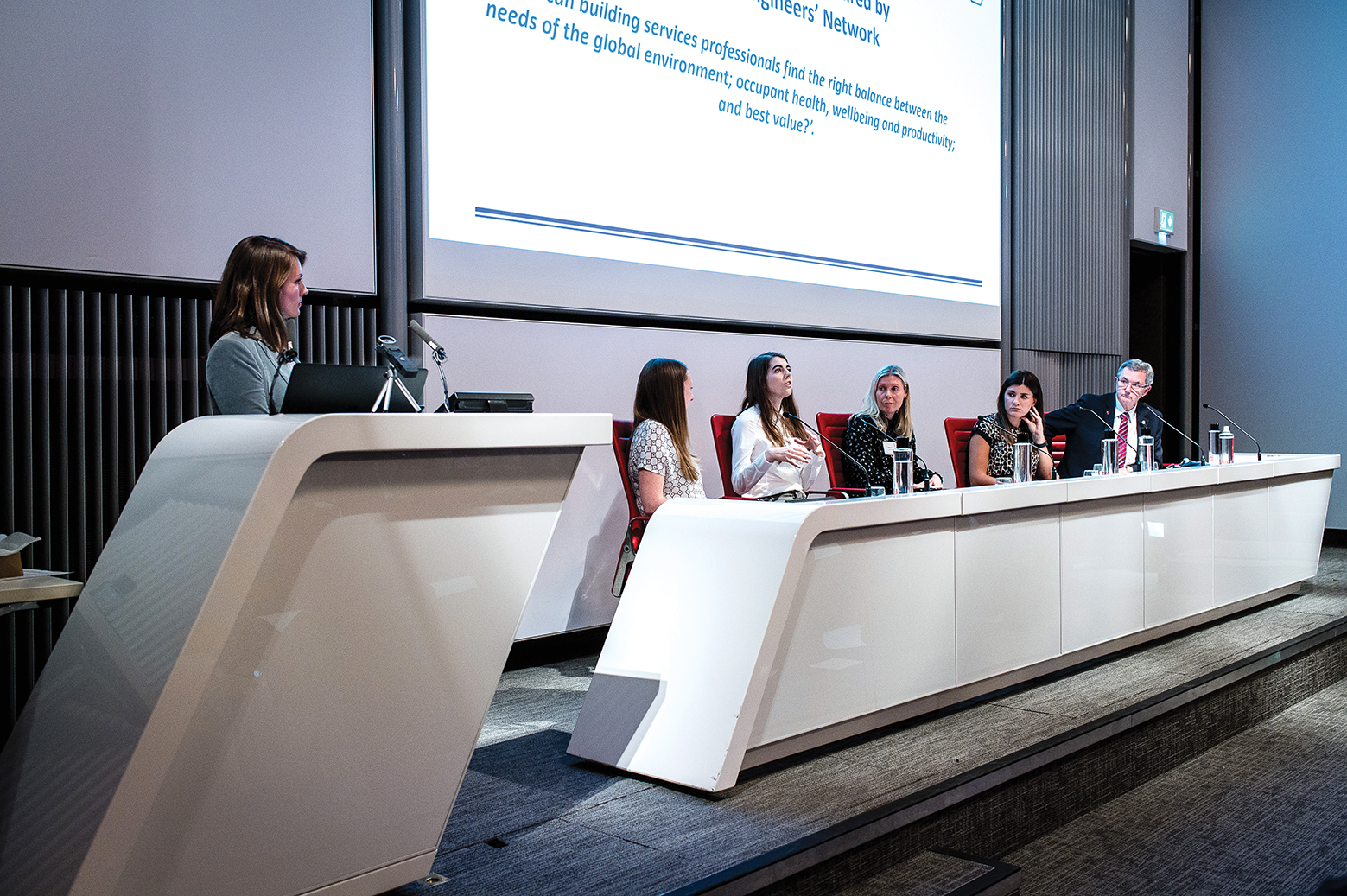
A panel debate, organised by the Young Engineers Network, discussed the same topic as the graduates’ presentations.
Alexandra Logan, senior mechanical engineer at ChapmanBDSP, said there was ‘a fine line between getting it right’ when finding a balance between wellbeing, cost and environmental impact.
To do this, user engagement is key, said Rebecca Carr, senior mechanical engineer at Hoare Lea, because ‘if the design doesn’t serve the building’s purpose, it is not valuable’. ASHRAE President Darryl Boyce added: ‘You also have to ensure you understand who is going to be operating the building, and their capacity, because great design needs great operation.’
Past graduate winner Reanna Taylor, of NG Bailey, said a project was not just about saving money upfront, but ‘about benefiting the bottom line throughout a building’s lifetime’. To achieve this, she said educating building users, owners and developers was paramount.
On the issue of thermal comfort, Taylor said: ‘It’s about training people to be adaptable to change. What’s wrong with putting on a cardigan when it’s cold? That’s ok as long as you’re not sitting in a ski coat and hat.’
Carr said data – and assessing what affects people – was key. She said a lot of temperature setpoints are based on outdated standards and that, now, different climates can be achieved in a single space so people can be catered for in different areas of one open-plan office. Surveying people who will move into the space would help, added Logan.



